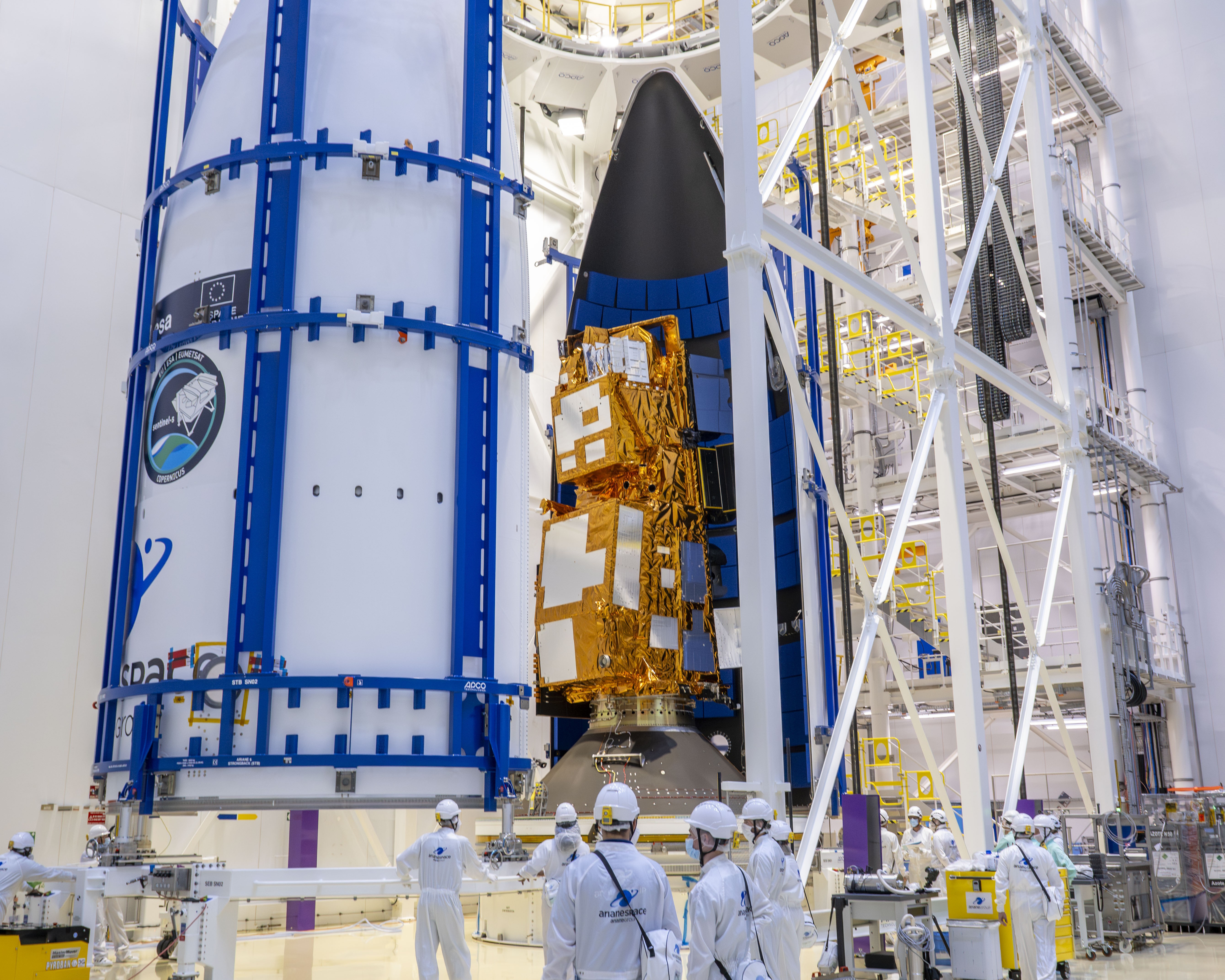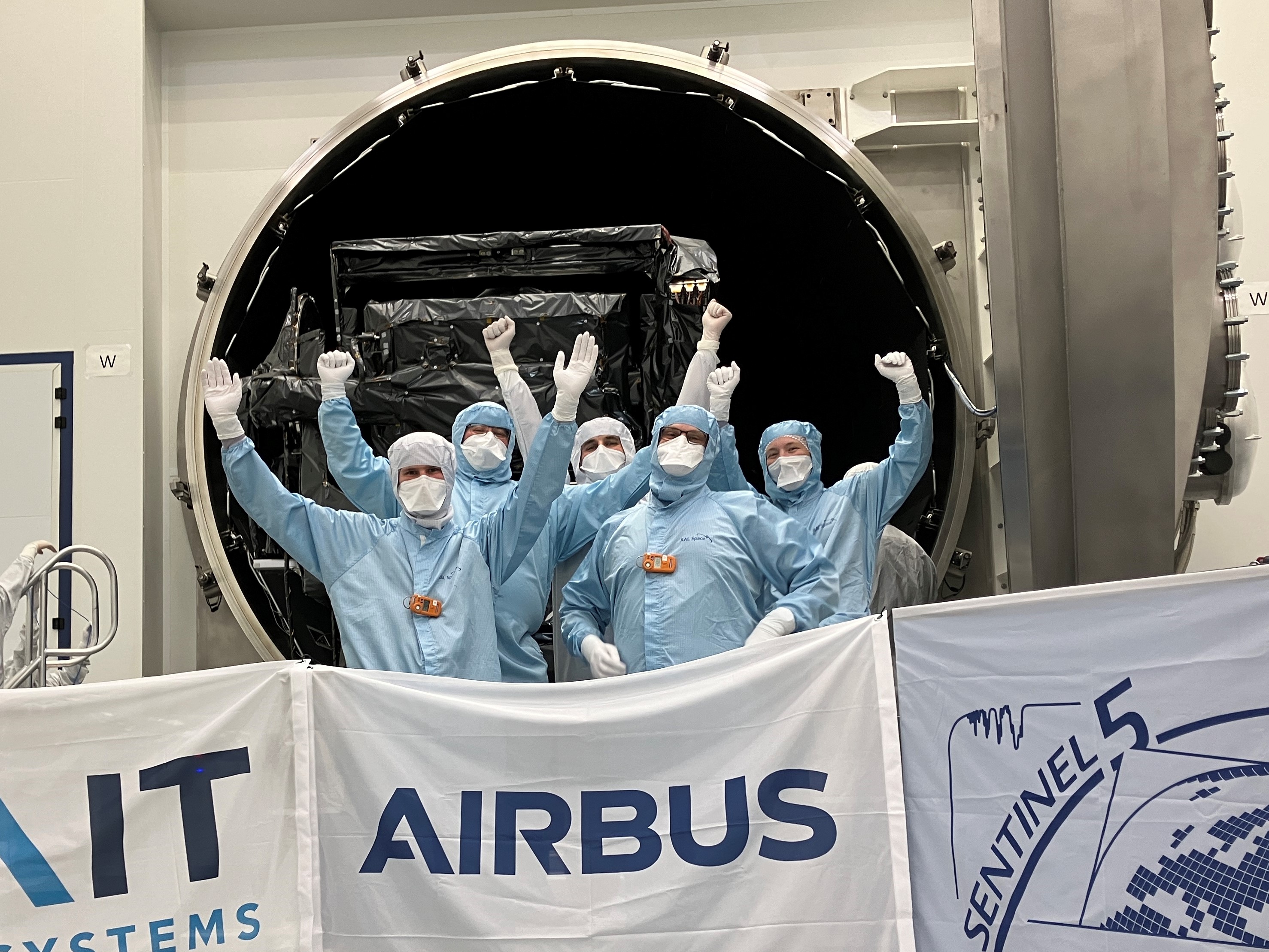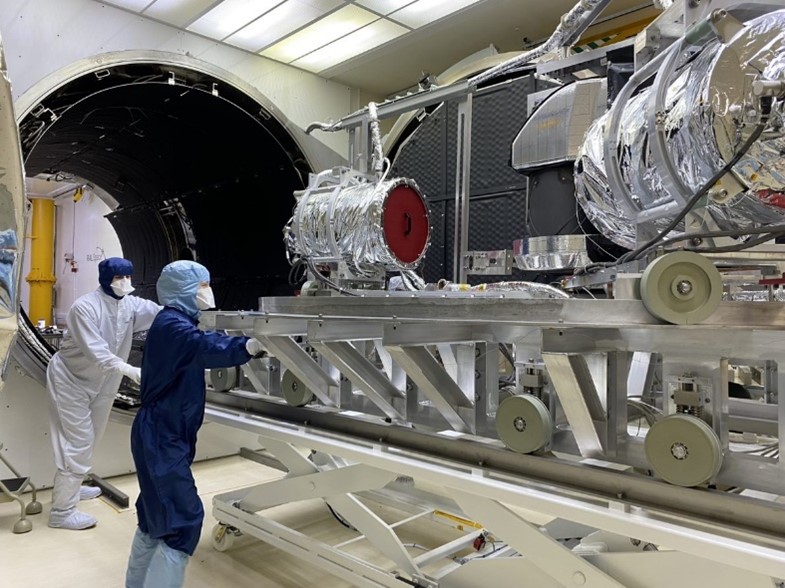MetOp-SG A1, the first satellite in the MetOp Second Generation series, will launch from French Guiana on Ariane 6's second commercial flight. The satellite has been developed by the European Space Agency and European industry for EUMETSAT, and marks the beginning of a new generation of polar-orbiting weather satellites.
The MetOp-SG mission comprises three successive pairs of A-type and B-type satellites, each type carrying a different, but complementary suite of instruments. Working together in orbit, they will deliver comprehensive global meteorological data for weather forecasts and climate prediction for more than 20 years.

MetOp-SG A being sealed into the Ariane 6 rocket's fairing in preparation for launch. Credit: ESA-CNES-ARIANESPACE/Optique vidéo du CSG–T. Leduc
Advanced atmospheric monitoring with Sentinel-5
The MetOp-SG A satellites carry the latest addition to the Sentinel family – a series of Earth observation missions supporting the European Union's Copernicus climate monitoring programme. Copernicus Sentinel-5 will measure atmospheric trace gases including ozone, nitrogen dioxide, and methane, as well as aerosols, providing crucial data to support environmental agencies in monitoring climate and air quality.
Dr Richard Siddans, Remote Sensing Scientist at RAL Space and the National Centre for Earth Observation, has contributed to preparing Sentinel-4 and Sentinel-5 data for many years and sits on the Mission Advisory Group. Dr Siddans and colleagues are involved in developing the operational processors and will be involved in the instrument's commissioning phase after launch.
Beyond data processing, RAL Space teams have been hands-on with Sentinel-5 hardware. Airbus Defence and Space, ESA's prime contractor for Sentinel-5, brought the instrument to RAL Space in 2023 for its thermal vacuum test campaign, before integration onto the MetOp-SG satellite. The second Sentinel-5 flight model is due to arrive at RAL Space in the next year.
“My colleagues from RAL Space and NCEO have been involved with both hardware development and data processing for the MetOp-SG and Sentinel-5 missions, and after years of dedication, it's incredibly exciting to see these missions finally launch," says Dr Siddans. “Insights from the MetOp-SG series will benefit weather forecasting, environmental monitoring and policy-making for decades to come. It's a significant leap forward in our ability to monitor atmospheric composition from space."

The RAL Space team celebrating the end of Sentinel-5's test campaign. Credit: STFC RAL Space
Precision temperature and humidity measurements with MWS
Sentinel-5 isn't the only instrument on board MetOp-SG A with RAL Space involvement. The Microwave Sounder (MWS) will deliver atmospheric temperature and water vapour data at various altitudes, providing crucial observations of cloud, snow, sea ice and surface phenomena.
This instrument is also led by Airbus Defence and Space, who completed successful calibration campaigns for all three MWS flight models (one for each A-type satellite) at RAL Space between 2022 and 2023, with support from RAL Space teams.
RAL Space designed and built the ground calibration system for MWS, which includes two sophisticated black body targets – one representing Earth and one representing deep space.

The MWS flight model and black body targets leaving the space test chamber. Credit: STFC RAL Space
Cutting-edge millimetre-wave technology
The MetOp-SG satellites will provide significantly enhanced observational capabilities compared to their predecessors, delivering improved atmospheric temperature and humidity data to meteorologists. This will result in more accurate weather forecasts and better prediction and tracking of extreme weather phenomena, thanks in part to RAL Space's advanced millimetre-wave receiver technology.
RAL Space has delivered 32 receivers that will fly across all six MetOp-SG satellites, representing a substantial contribution to this critical European weather monitoring infrastructure.
Dr Simon Rea, Lead Engineer on the MetOp-SG receiver programme at RAL Space, said: “Our millimetre-wave receivers represent years of cutting-edge engineering design and technology development. Knowing that our technology will be operating in space for the years to come, playing an important role in weather prediction and climate monitoring, is incredibly rewarding. The reliability and precision of these instruments will be crucial for the mission's success, and we're proud of the role our technology plays in this international effort."
The key millimetre-wave components for these receivers were designed and manufactured by RAL Space using state-of-the-art facilities including the Precision Development Facility, where the team specialises in crafting components to micron-level accuracy.
Launch details
MetOp-SG A1 is due to launch from Kourou, French Guiana in the early hours 13 August, UK time, on Ariane 6's second commercial flight, VA264.
The European Space Agency will broadcast the launch from approximately 01:10 BST on ESA Web TV One. Liftoff is scheduled for 01:37 BST.
